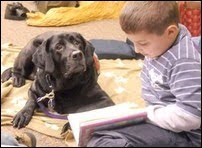APPEARANCE: Stinging Nettle is an erect plant that can grow as high as 7 feet. It reproduces from its shallow root system and grows in dense patches. The leaves are lance-shaped with toothed margins. Flowers hang in drooping clusters. The stems are covered with fine, stinging hairs.
HABITAT AND RANGE: Nettles inhabit drainage ditches, stream banks and other moist soils throughout North America.
PARTS USED: Leaves and stems of the pre-flowering plant.
PRIMARY MEDICINAL ACTIVITIES: Nutritive, antihistamine, astringent, tonic, helps with blood cleansing.
NETTLES AND DOGS: The tiny hairs on the live plant (not what the dog eats) causes a burning sting. Fortunately this is short lived and drying the herb neutralizes the plants 'sting' - so in the dried form, this herb is completley safe. In fact, 100 grams of dried Nettle contain:
- 30.4 grams of crude protein
- 2970 milligrams of calcium
- 680 mg of phosphorus
- 32.2 mg iron
- 650 mg magnesium
- 20.2 mg beta carotene
- 3450 mg of potassium
- Vitamins A, C, D and B complex
This is amazing - how do I give this to my dog?
We recommend our Organic Green Alternative which contain a balanced blend of herbs including NETTLES!
CLICK HERE TO ORDER










